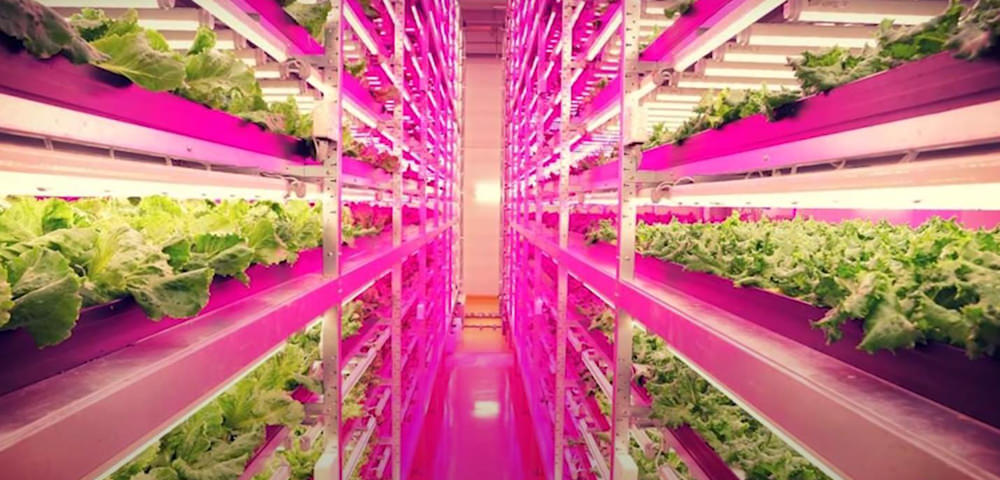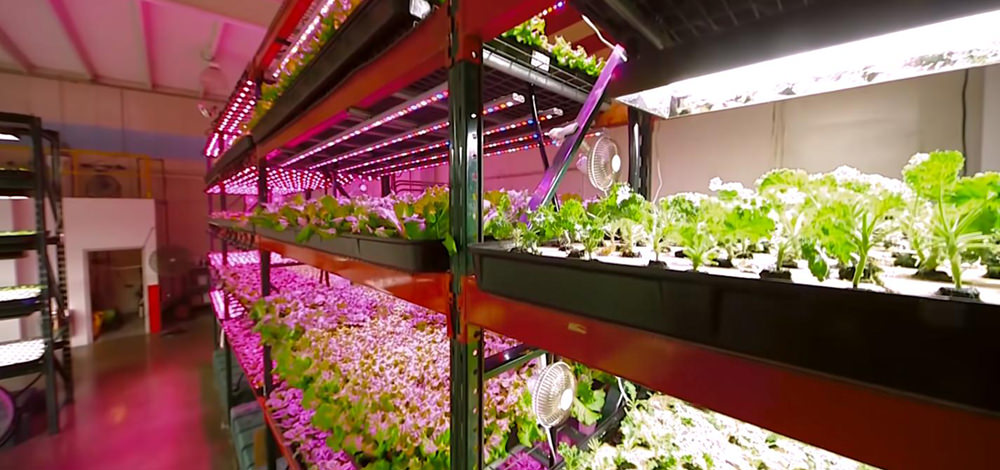Pros & Cons of Growing Lettuce by Vertical Farming
Vertical farming (also sometimes called vertical gardening) is an agricultural practice in which crops are grown in vertically stacked layers. Vertical farming could be quite a promising future food source, as space can be used fairly efficiently to produce large quantities of vegetables and fruits, such as lettuce.
However, along with many other additional advantages, there are also some issues associated with vertical farming.
Today here I am going to list some pros and cons of vertical farming, take growing lettuce as a sample, let's have a briefly summary and comparison.

Advantages of Grow Lettuce by Vertical Farming
● Stable yields
An important advantage of vertical farming is that it guarantees fairly constant lettuce yields. If everything is well organized, it is easy to predict the harvest of lettuces over a period of time.
● Harvest all year along
Another important upside of vertical farming is that lettuces can be harvested all year long.
Compared with outdoor farming where the harvest time is only a few weeks or months, the lettuce output of vertical farming is much more stable, and there is no need to care about changes in weather and climate, everything is controllable.
● No pesticides needed
Since vertical farming is usually done indoors, the plants are also less likely to be contaminated by a variety of pests. If workers are very careful not to bring any pests indoors, the chances of pests entering a vertical farming system are close to zero.
No pests, no pesticides needed, less lettuces yields lost, leading to a more yields than traditional farming.
● Savings in water
For this part, you might think that most hydroponic growing methods for vertical farming require a lot of water. But the opposite is true.
Compared with traditional outdoor farming, hydroponics is estimated to save 90%-95% of water. This is because the water is kept in a closed water system that is constantly recycled, which means less water is needed to nourish the plants from seed to harvest in the end.
● More efficient land use
Vertical farming also allows farmers to utilize their land in a more efficient manner.
With vertical farming, yields are often much higher than with traditional farming because the multi-layered growing systems can be planted on top of each other.
Disadvantages of Grow Lettuce by Vertical Farming
● Experts needed in vertical farms
Since vertical farming projects are usually quite complex, it requires professional experts to set up a vertical farming system in a proper manner.
However, as the technology behind vertical farming is fairly new, it may not be easy to find someone in your local area with the requisite level of expertise in this field.
● High upfront costs
Another downside of vertical farming is that initial construction and installation costs can be quite high.
Since vertical farming systems are often quite complex and require a lot of planning, the initial costs can be substantial.
● High operational costs
Additionally, vertical farming can be quite expensive to operate.
For example, extensive monitoring is necessary to ensure optimal growing conditions. And professional LED grow lights are essential, as well as nutrient solutions, ventilation equipment, irrigation systems, etc.
● Significant maintenance efforts
Vertical farming also requires a lot of maintenance.
Since conditions inside agricultural systems are controlled artificially through lighting and changing humidity levels, some of the equipment used to control these parameters can become damaged over time.
Consequently, these devices have to be replaced, which can mean serious maintenance work and costs over time.
● Critical technology issues
Another problem with vertical farming is that it relies heavily on working technology.
For example, imagine the lighting fixtures in such a system often break down, or the spectrum provided by LED grow light is not suitable, crop yields are likely to be severely affected to grow not well.
In contrast, outdoor farms do not have such problems because the lighting condition is natural and lettuces are perfectly adaptable.

You can tell how important a professional lighting system is for vertical farming, luckily Atop Horticultural Lighting have successfully delivered numerous grow lighting projects for different vertical farms, any questions you can email to [email protected] for free lighting design, optic simulation, exclusive spectrum customized, a series of support and service.
Conclusion
In the context of increasing global population and continuous reduction of available arable land, vertical farming is slowly becoming a trend.
Although the cost and planting technology requirements are higher than traditional agriculture, the output is steadily increasing, and the food is more delicious, green and healthy, etc. These are advantages that cannot be ignored.
In the long run, vertical farming is of great significance to the protection of global food security. When cost control and related technologies are done well, I think vertical farming will appear in every corner of the world , contribute to human food security together with outdoor agriculture.

